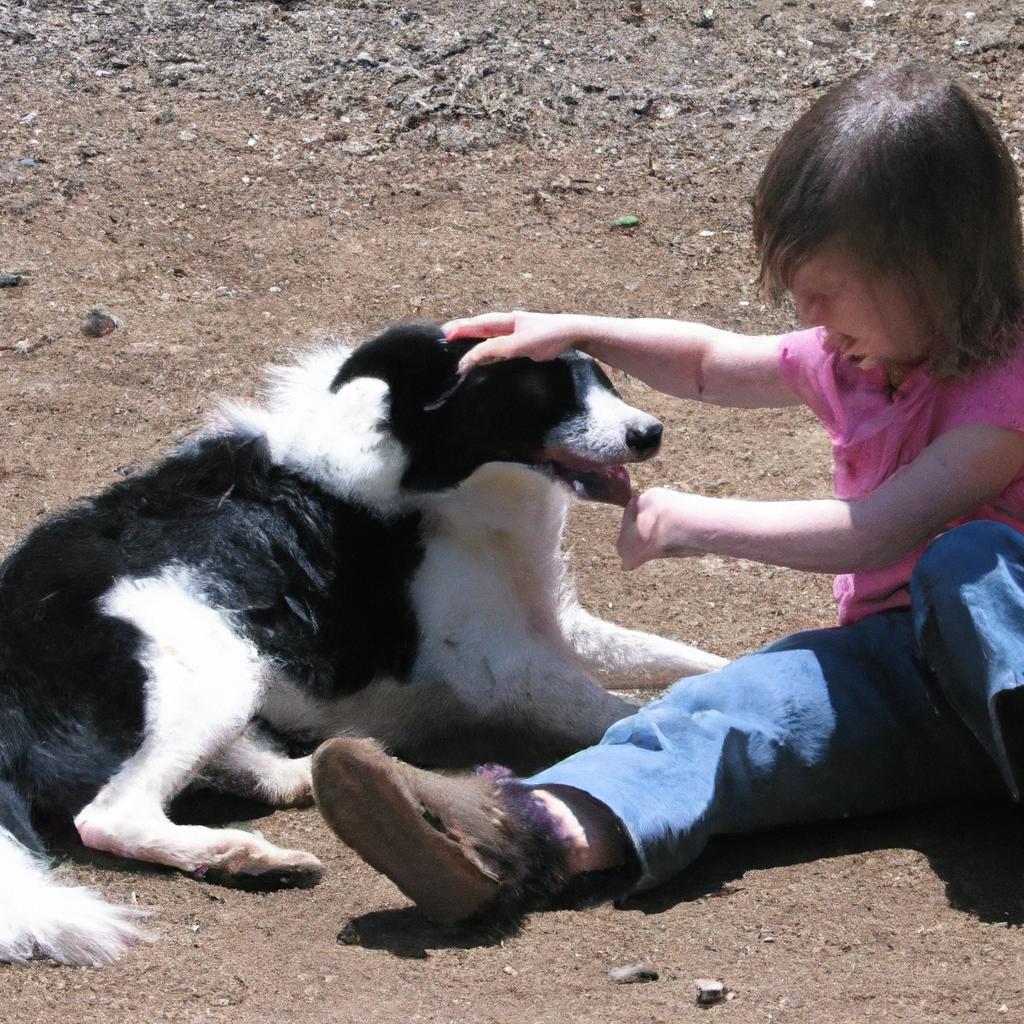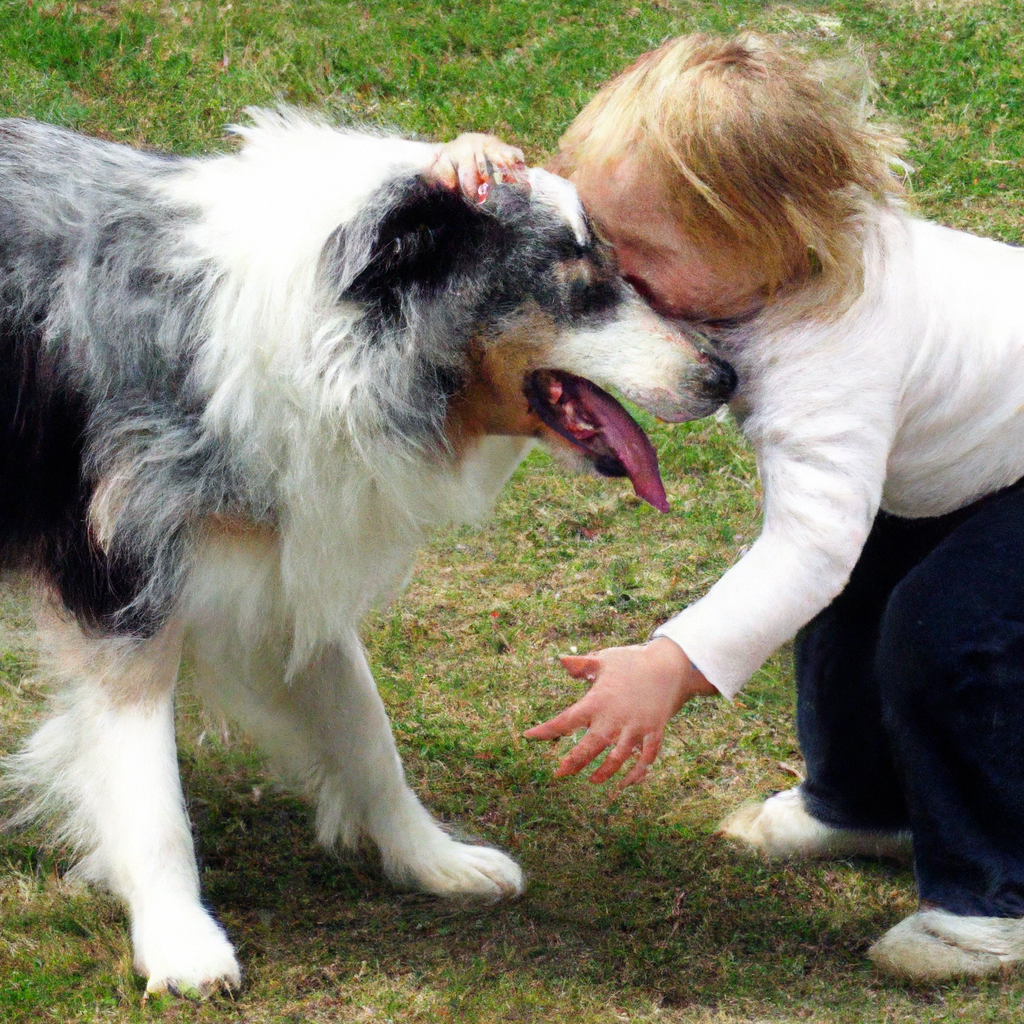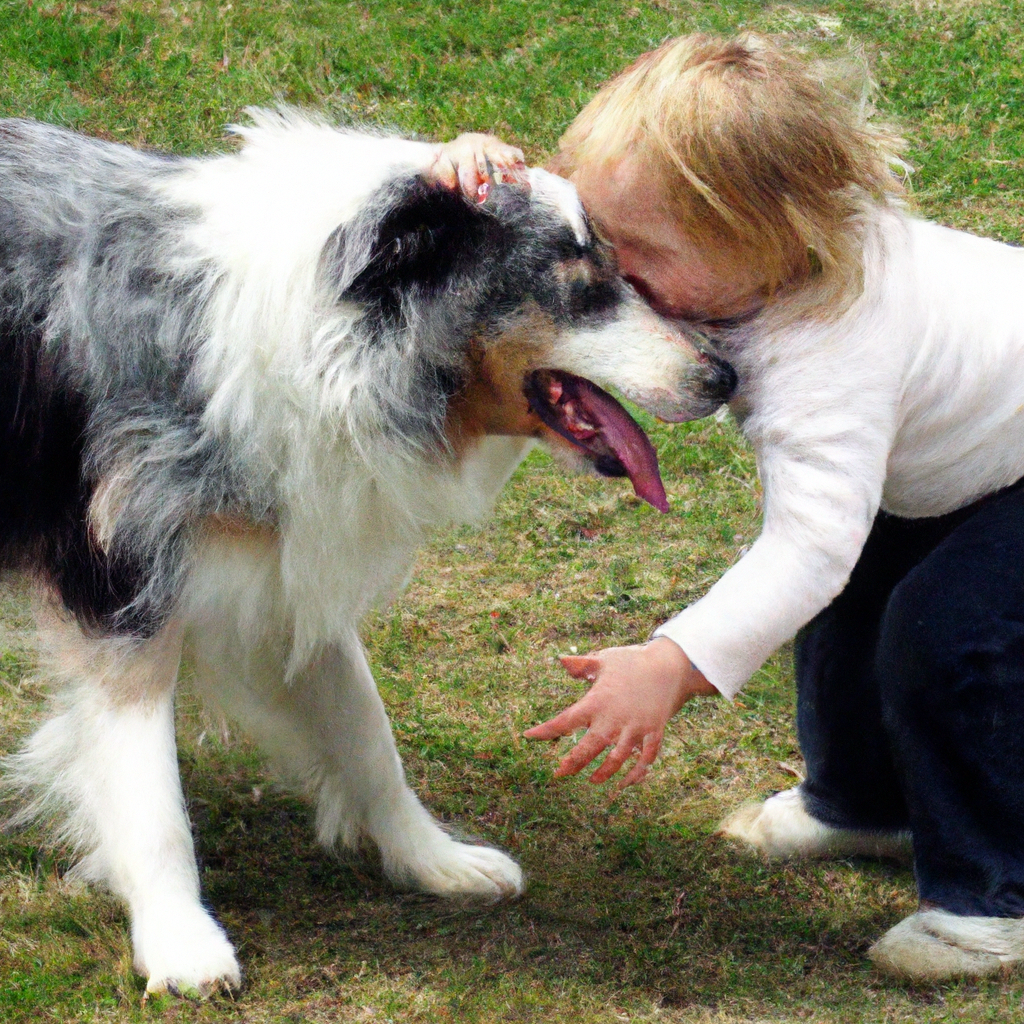Let’s talk about how you can create a strong and positive bond between your children and your beloved Border Collie. Building a nurturing connection between kids and their furry friend is not only important for their happiness, but also for the safety and well-being of both parties involved. In this article, we will explore some practical tips and strategies to help you foster a harmonious relationship between kids and your Border Collie, ensuring a lifetime of love and friendship.
Setting the Stage for a Positive Connection
Introducing your child to the border collie
When introducing your child to your border collie, it is important to create a calm and controlled environment. Ensure that both your child and the dog are comfortable and relaxed. Start by allowing your child to observe the dog from a distance, and gradually bring them closer together.
Teaching your child basic dog etiquette
Before your child interacts with your border collie, it is crucial to teach them basic dog etiquette. This includes showing them how to approach the dog slowly and gently, without startling or overwhelming them. Teach your child to avoid pulling the dog’s ears or tail, and not to disturb them while they are eating or sleeping.
Establishing boundaries and rules
Setting clear boundaries and rules for both your child and the border collie is essential for a positive connection. Teach your child to respect the dog’s personal space and not to bother them when they are resting or in their designated space. Similarly, establish rules for the dog, such as not jumping on your child or taking food from their hand. Consistency in enforcing these boundaries will help to create a harmonious relationship.
Building Trust and Bonding
Spending quality time together
To build trust and strengthen the bond between your child and the border collie, encourage them to spend quality time together. This can involve activities such as reading a book next to the dog, playing a game of fetch, or simply sitting and petting them. Quality time will allow both your child and the dog to become more familiar with each other’s presence and establish a sense of comfort.
Engaging in interactive play
Interactive play is not only fun, but it also promotes a positive connection between your child and the border collie. Encourage your child to engage in activities like playing with toys or teaching the dog new tricks. This interactive play not only provides mental stimulation for the dog but also allows your child to actively participate in the dog’s well-being.
Taking walks and exploring together
Going on regular walks and exploring together is an excellent way for your child and the border collie to bond. Take them on walks in different environments, allowing them to experience new sights, smells, and sounds together. This shared activity promotes a sense of teamwork and strengthens the connection between your child and the dog.

Promoting Respect and Understanding
Teaching empathy towards animals
It is important to teach your child empathy towards animals, including your border collie. Educate them about the dog’s emotional needs, their ability to feel pain, and the importance of treating them with kindness and respect. By fostering empathy, you will help your child develop a deeper understanding of the dog’s feelings and needs.
Educating your child about the border collie’s needs
Teaching your child about the border collie’s specific needs is essential for fostering a positive connection. Educate them about the breed’s high energy levels, need for mental stimulation, and the importance of regular exercise. By understanding these needs, your child will be better equipped to meet the dog’s requirements and build a strong bond.
Encouraging gentle handling and petting
Emphasize the importance of gentle handling and petting to prevent any harm or discomfort to the border collie. Teach your child to stroke the dog softly and avoid any rough or aggressive behavior. Supervise their interactions initially to ensure that your child understands the appropriate way to interact with the dog and reinforce gentle actions.
Creating a Safe and Positive Environment
Supervising interactions between your child and the border collie
When your child and the border collie are together, it is crucial to supervise their interactions. This ensures the safety of both parties and allows you to intervene if any inappropriate behavior occurs. Remain vigilant and address any signs of discomfort or aggression from either the child or the dog to maintain a safe and positive environment.
Providing a designated space for the dog and child to relax
Creating a designated space where both the dog and child can relax is essential for their well-being. This can be a cozy corner in your home or a specific area in the backyard. Make sure this space is comfortable, equipped with water and toys for the dog, and allows your child to have their own peaceful retreat.
Ensuring proper hygiene and cleanliness for both child and dog
Maintaining hygiene and cleanliness is crucial for both your child and the border collie. Teach your child the importance of washing their hands after playing with the dog and ensure that the dog’s living area is kept clean. Regular grooming for the dog is also important to prevent any discomfort or health issues.

Incorporating Training and Education
Teaching basic obedience commands to the border collie
Incorporating training into your border collie’s routine is not only beneficial for their development but also for strengthening the bond with your child. Teach your dog basic obedience commands such as sit, stay, and come, and involve your child in the training process. This allows your child to actively participate and establish themselves as a respected authority figure in the dog’s eyes.
Involving your child in training activities
Encourage your child to actively participate in training activities with the border collie. This can involve rewarding the dog with treats for good behavior, practicing commands together, or even attending dog training classes as a family. Involving your child in training activities not only helps with the dog’s obedience but also promotes a sense of responsibility and teamwork.
Learning about dog body language and communication
Teaching your child about dog body language and communication is crucial for their understanding of the border collie’s needs and emotions. Help your child recognize signs of fear, stress, or discomfort in the dog, as well as signs of happiness and contentment. This knowledge will enable your child to interact with the dog in a respectful and considerate manner.
Handling Challenges and Correcting Behavior
Addressing signs of fear or aggression
In the event that your child or the border collie displays signs of fear or aggression, it is important to address the issue promptly. Understand the underlying cause of the behavior and seek professional guidance if needed. Implement techniques such as positive reinforcement and desensitization to help both your child and the dog overcome these challenges and build a positive connection.
Teaching your child how to react to certain behaviors
Educate your child about how to react to certain behaviors they may encounter from the border collie. Teach them to remain calm and avoid reacting with fear or aggression themselves. Encourage them to use positive reinforcement techniques, such as rewarding the dog for good behavior, to reinforce positive behaviors and discourage negative ones.
Implementing positive reinforcement techniques
Positive reinforcement is a powerful tool when it comes to shaping behavior and fostering a positive connection. Teach your child to reward the border collie for exhibiting desired behaviors, such as following commands or playing gently. This positive reinforcement approach helps the dog associate their actions with positive outcomes and encourages them to continue displaying good behavior.
Encouraging Responsibility and Care
Assigning age-appropriate tasks to your child
Encouraging responsibility is an important aspect of building a positive connection between your child and the border collie. Assign age-appropriate tasks to your child, such as feeding the dog or helping with grooming. This not only helps them develop a sense of responsibility but also promotes a deeper bond as the dog recognizes your child’s role in their care.
Teaching the importance of feeding and grooming
Teach your child about the importance of feeding and grooming as part of responsible pet ownership. Explain the dog’s dietary requirements and involve your child in measuring out and serving their meals. Additionally, educate them about the proper grooming routine for the border collie, including brushing their fur and cleaning their ears. This involvement in their care strengthens the bond between your child and the dog.
Involving your child in health check-ups and vaccinations
Involving your child in the dog’s health check-ups and vaccinations can be a valuable learning experience. Take your child to veterinary appointments and allow them to observe the procedures. This engagement facilitates a greater understanding of the border collie’s well-being and encourages a sense of responsibility for their overall health.
Seeking Professional Guidance
Consulting a professional dog trainer or behaviorist
If you encounter challenges or have concerns about the connection between your child and the border collie, reaching out to a professional dog trainer or behaviorist is highly recommended. These experts can provide valuable guidance specific to your situation and assist in addressing any issues that may arise.
Attending dog training classes together
Attending dog training classes as a family is not only a fun and educational experience but also a great way to strengthen the connection between your child and the border collie. These classes provide an opportunity for your child to learn alongside you, reinforcing the training methods and commands that have been established.
Receiving guidance on socializing the border collie
Proper socialization is crucial for the well-being of any dog, including the border collie. Seek guidance from professionals on how to socialize your border collie with other dogs and people. This ensures that your child and the dog can comfortably interact with others and fosters a positive connection within a broader context.
Monitoring and Strengthening the Connection
Observing the dynamics between your child and the border collie
Continuously monitoring the dynamics between your child and the border collie is essential for maintaining a positive connection. Observe their interactions closely, ensuring that both parties are comfortable and respectful towards each other. Address any changes in behavior promptly and provide guidance or intervention if necessary.
Addressing any changes or challenges promptly
If you notice any changes or challenges in the connection between your child and the border collie, it is important to address them promptly. These changes may be indicative of underlying issues that need to be addressed. Open communication, professional guidance, and intervention can help resolve any challenges and strengthen the bond between your child and the dog.
Continuously nurturing and reinforcing the positive connection
Building and maintaining a positive connection between your child and the border collie is an ongoing process. Continuously nurture the bond by engaging in activities that both your child and the dog enjoy. Reinforce positive interactions with praise and rewards, ensuring that your child understands the value of their connection with the dog.
Benefits of a Positive Relationship for Kids and Border Collies
Enhancing emotional well-being
A positive connection between your child and the border collie has numerous benefits for both parties, particularly when it comes to emotional well-being. The dog can provide companionship, comfort, and a source of unconditional love for your child. In turn, the child learns empathy, responsibility, and experiences increased happiness through their bond with the dog.
Promoting responsibility and empathy
Caring for a border collie fosters responsibility and empathy in your child. They learn the importance of meeting the dog’s needs, including regular exercise, grooming, and healthcare. This sense of responsibility extends beyond the dog, helping your child develop a compassionate and empathetic nature towards other living beings.
Fostering a lifelong bond
Perhaps one of the most significant benefits of a positive connection between your child and the border collie is the potential for a lifelong bond. This bond carries through childhood into adolescence and adulthood, providing a source of emotional support, companionship, and shared memories. The border collie becomes an integral part of your child’s life, growing together and creating a lasting connection.
Nurturing a positive connection between your child and your border collie requires time, patience, and consistent effort. By introducing them properly, teaching them to respect each other, creating a safe and positive environment, incorporating training and education, and addressing any challenges promptly, you can create a strong and meaningful bond that benefits both your child and the dog for years to come.
